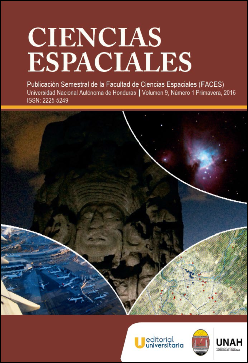Transition of the aeronautical authority of General Direction to Honduran Agency of Civil Aeronautics
DOI:
https://doi.org/10.5377/ce.v9i1.3139Keywords:
Transition, Aeronautical, Standards, Aeronautical AuthorityAbstract
The General Direction of Civil Aeronautical was an dependence attached to the Ministry of Infrastructure and Utilities was for 63 years, presenting problems for the delay of processes and procedures to exercise strict surveillance to safety/security at international airports and airfields in the country, which it is evidenced in the Report “International Aviation Safety Assessment (IASA)” of the Federal Aviation Administration (FAA - Results); because of the qualified and certified personnel, budget availability, others. Resulting in a non-observance to the international standards as a responsibility of the State of Honduras. Through executive decrees(PCM-001-2014 February 22, 2014, PCM-047-2014 October 10, 2014 y PCM-022-2015 May 18 2015)the DGAC became a part of the Sectorial Cabinet Security and Defense, and the creation of the Honduran Agency Civil Aviation Authority (AHAC) as an institution of the Ministry of National Defense (SEDENA), be supposed to the transition from the DGAC to AHAC allow to have technical, administrative and financial autonomy, promote the development plans, programs, institutional projects to ensure compliance with standards and potential the human capital with aeronautical skills, to achieve certification of airports Hondurans. This research is qualitative type, since in the transition process corresponds to a separation of the Ministry of Infrastructure and Utilities (INSEP) to the Ministry of National Defense (SEDENA), in order to operate as a decentralized institution. The transition process contributes to the development of AHAC, through a transition process, that generates the technical, administrative and financial independence necessary to satisfy the standards of international civil aviation. The main findings of the research include: 1) A marked resistance to change, as a result of aggressive procedures used in the transition; it derived from an abrupt change, a clear disagreement by some employees with the matters related to the transition (50% of the institution) was observed. 2) No information available regarding to the new administrative system, which is governed to the Civil Aviation Authority of Honduras, which is supported by the lack of formal written communication. 3) The employees of the Agency see the transition as negative for civil aviation in Honduras and at the same time, they do not feel that the new institution can provide job stability and it has generated a lot of uncertainty between the staff. 4) The employees do not feel that the transition process has been necessary. And a lot of the staff has no any expectation with the transition process, showing a high level of discouragement. 5) A minority considers that the transition process will bring opportunities to acquire new technology, training, qualified personnel and improvements to the institution.
Downloads
1178




